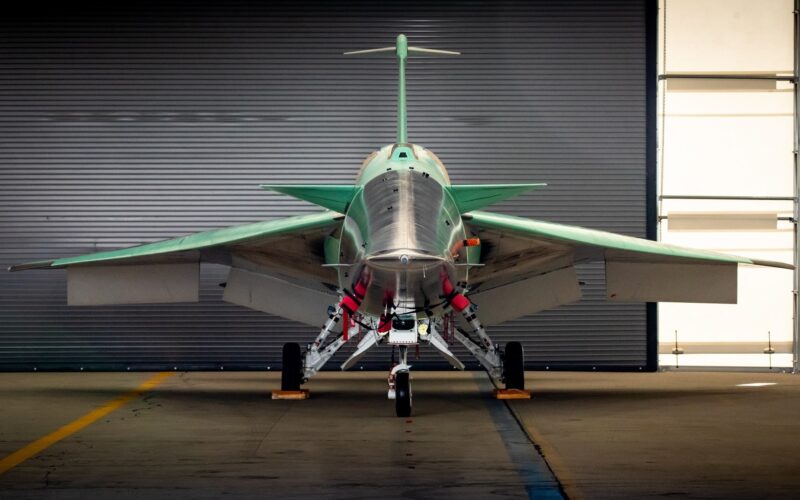NASA’s X-59 Supersonic Jet Advances Toward Runway

NASA’s X-59 aircraft moved from its construction site to the runway at Lockheed Martin Skunk Works.
This crucial transition marks one of the many milestones in the preparation of the X-59 for its inaugural flight and subsequent tests. The next phase will involve conducting extensive ground tests to ensure the aircraft’s safety and performance.
A collaboration between NASA and Lockheed Martin, the X-59 is set to revolutionize supersonic travel by minimizing the sonic boom associated with flying faster than the speed of sound, also known as Mach 1. By replacing the boom with what NASA describes as a more tolerable “sonic thump,” the X-59 seeks to address one of the major barriers to supersonic flight over populated areas.
Enabling supersonic-friendly regulations
Once the X-59 takes to the skies, it will embark on a series of flights over various communities to collect crucial data on human responses to the sound produced during supersonic travel. This data will be meticulously analyzed by NASA and shared with international civil aviation regulators.
The US law currently forbids flying over land at a speed superior to Mach 1 (1,234 kilometers per hour or 767 miles per hour) without special authorization provided by the Federal Aviation Administration. Hence the need for new regulations if a company is to operate regular supersonic flights. The noise was one of the main drawbacks of Concorde, which prevented it from flying supersonic across the US and European airspaces and confined it to transatlantic flights.
The collection of community response data will provide valuable insights into how people react to the modified sonic signature produced by the X-59, offering a foundation for regulatory decision-making. The ultimate goal is to provide the scientific evidence needed to potentially revise existing regulations and permit commercial supersonic flights over land.
The X-59 is powered by a custom version of the General Electric F414, known as the F414-GE-100 turbofan engine. This specific engine is utilized in various fighter jets, including the Boeing F/A-18 Super Hornet, Saab JAS 39 Gripen, KAI KF-21 Boramae, and more.
